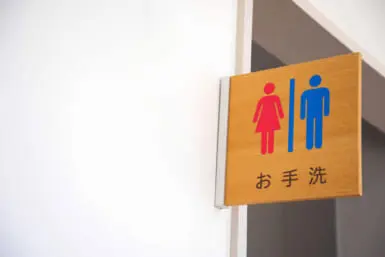by Brett Iimura
The question no longer seems to be whether to raise children bilingually or not, but rather how to do so.
Although there is still much controversy in a few countries regarding whether or not public funds should be utilized in making bilingual education widely available, most countries around the world either actively promote or de facto require bilingualism because of the proximity of various cultural groups.
Historically, countries that lean toward assimilation rather than acculturation or, as in Japan’s case, a compartmentalization of Japanese and non-Japanese, tend to be monolingual despite pockets of minority cultures or immigrant communities imbedded in the dominant culture.
The backlash to colonialism also plays a role in many countries’ desire to mandate their native tongue. However, a majority of countries actively promote bi- and multilingualism, and most people now recognize the benefits both cognitively and economically of becoming bilingual.
As more is learned about how the human brain functions, evidence is amassing regarding the positive effects bilingualism has on creating a more flexible brain. Executive function, a higher brain function that controls attention, benefits from the old adage, ‘practice makes perfect.’ It is only logical that its function is enhanced by speaking two languages, which requires its help in altering attention when deciding which language to use and what extraneous stimuli to ignore. This effect carries over into other areas of life that require selective attention and disregard of distraction. Another oft-repeated theme in scientific literature is that of remaining cognitively active throughout one’s life (doing crossword puzzles, playing a musical instrument, etc.), which is known to help delay dementia later in life. The actual act of speaking two or more languages is thought to be yet another way in which the brain is enriched and maintains its suppleness for longer.
It’s practically a no-brainer that job prospects increase for multilingual individuals. The potential economic benefit of this is obvious. Since language is part and parcel of culture, the global benefit of the existence of more people familiar with and having an affinity for a multitude of cultures, as well as having the capability of analyzing world events from different perspectives and contributing to international understanding, is great.
So, when is the best time to start down the path of multilingualism? From birth is probably ideal. Babies are born with the ability to distinguish all sounds. This ability diminishes from about six months of age onward, when the brain starts to narrow its focus toward the sounds in its immediate environment. The generally accepted scientific wisdom is that there is a limited window of opportunity to develop native fluency in more than one language between birth and seven years of age. This is partially based on the fact that this is also the ideal time to learn one’s first language. If all parts of the brain are not in working order during this period, language acquisition is delayed. There are many people, however, who seem to defy this window and learn several languages later on. Some argue that learning a second language during childhood is more a case of easy come, easy go if the second language is not maintained, although learning a third and fourth language is still usually made easier by having learned a second language early on.
What is the best way to go about trying to become bilingual? Here is where consensus breaks down and individual circumstances play a major role. OPOL, One Parent One Language, is one of the most popular methods. This works well if both parents have different native tongues or are fluent in more than one language. It involves each of the parents choosing one language each with which to speak to their children. Strictly followed, neither parent would ever use another language when speaking directly to their child, although they might mix and match with each other and other members of their social circle. If the parent is monolingual, this is pretty easy to enforce, but if the parent himself or herself is bilingual, then the choice as to which language to speak with the child and whether or not to solely use one language even when conversing in mixed company becomes more difficult, if not downright confusing.

One of the most important points to keep in mind is to make sure there is a clear separation of languages. This may be done with the OPOL method or it could be arranged according to place or occasion. For example, it might be arranged so that one language will be used in the house and another at school and yet a third in the community or with a nanny or au pair. This may work well for a monolingual family living in another culture. Or it could be decided that one language is used at dinnertime and another at playtime, perhaps to encourage all the members of a family to develop and maintain bilingualism. It’s important to be aware, however, that the vocabulary and cultural, academic, and social language and mores learned in each of these contexts will be different and some additional experiences in the other language may need to be added depending upon the purpose of developing your child’s bilingualism.
Some researchers propose that multilingual parents should be multilingual models for their children and not limit themselves to strictly speaking solely one language with their children.
Many of those families attempting OPOL find themselves falling into this practice naturally anyway. However, it is generally agreed that, at least until both languages are solidified in the child’s brain and can be spoken fluently, the languages should not be mixed within one sentence. Indiscriminately mixing the languages leaves the young child confused as to which vocabulary or grammatical structure belongs to which language or which is the culturally appropriate utterance, and can create children who are semi-lingual, without any fluent, native tongue with which to use in higher cognitive processing, negatively impacting later academic achievement.
Another trap to be aware of is that of parents speaking a non-native tongue to their child. If this is the sole language that parent speaks with the child, then the child may not have enough clues to be able to use the language expressively or fluently. This may inhibit the emotional bonding that should exist between parent and child and leave the child to flounder as well as risking semi-lingualism. It is important above all to create a strong relationship with your child through language, even if that means foregoing bilingualism until later.
Is there really such a thing as a completely balanced bilingual? Does a bilingual person necessarily know all topics and speech registers (colloquial, academic, polite forms, etc.) equally in both languages? There are some people who attain this level, but it may not actually be practical or necessary for everyone. If you are foreign and can hold a conversation. in Japanese about more than just the weather, you may consider yourself bilingual on a conversational level. You may consider yourself bilingual when talking about certain topics or in certain situations, but not in others. Perhaps you can read one language but can’t speak it. Bilingualism can be defined more loosely than many people assume, so pat yourself on the back for the efforts you are making in that direction! Many of the international schools in Japan offer at least basic instruction in Japanese. Living in Japan offers the best opportunity for getting out and using the language in the community. For those families who are a combination of Japanese and another culture and are struggling to maintain or boost their children’s ‘other’ language skills in an overwhelmingly Japanese environment, particularly if the children are attending Japanese schools, there are many groups dedicated to this purpose. Most of these groups tend to foster English learning, however there are a few devoted to other languages as well. Your child’s needs, age, and the level of fluency you desire for them to achieve will determine which group is best for you. Groups range from informal gatherings for the children to simply play in the minority language together to fee-based, formal after-school options run by professional teachers. If there isn’t an appropriate group near you, you can start up a new one with other like-minded families. You don’t have to go it alone, as there are many parents who have set up groups in Japan before and can help steer you away from some of the pitfalls that they discovered through trial and error.

Using videos, DVDs, and internet resources can be helpful, but these are not a substitute for face-to-face communication. Helping children to become bilingual requires parental effort. It doesn’t simply magically happen, even when the parents are from different language backgrounds. It requires knowledge of the methods and strategies involved in learning versus acquiring language, discussion of needs and goals for bilingualism and/or biliteracy, pre-planning how to create an environment (or several environments) in which to implement your plan, and the flexibility to change plans depending upon your child’s developing strengths and weaknesses in each language.
Some resources to get started:
Multilingual Matters:
www.bilingualfamilynewsletter.com
Bilingualism Special Interest Group of JALT (the Japan Association of Language Teachers):
Saturday Literacy Community Program:










